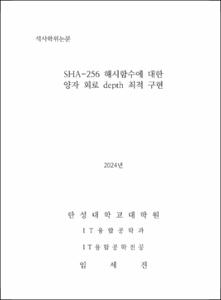SHA-256 해시함수에 대한 양자 회로 depth 최적 구현
- Type
- Thesis
- Department
- 대학원 IT융합공학과
- Issued Date
- 2024
- Publisher
- 한성대학교 대학원
- Keyword
- 양자컴퓨터; Grover 알고리즘; 양자 회로 구현; depth 최적화; T-depth 최적화; SHA-256 해시함수; 역상 공격; Carry-save 덧셈기
- Files in This Item:
-
-
Download
 200000730773.pdf
기타 데이터 / 2.66 MB / Adobe PDF
200000730773.pdf
기타 데이터 / 2.66 MB / Adobe PDF
-
Items in Repository are protected by copyright, with all rights reserved, unless otherwise indicated.